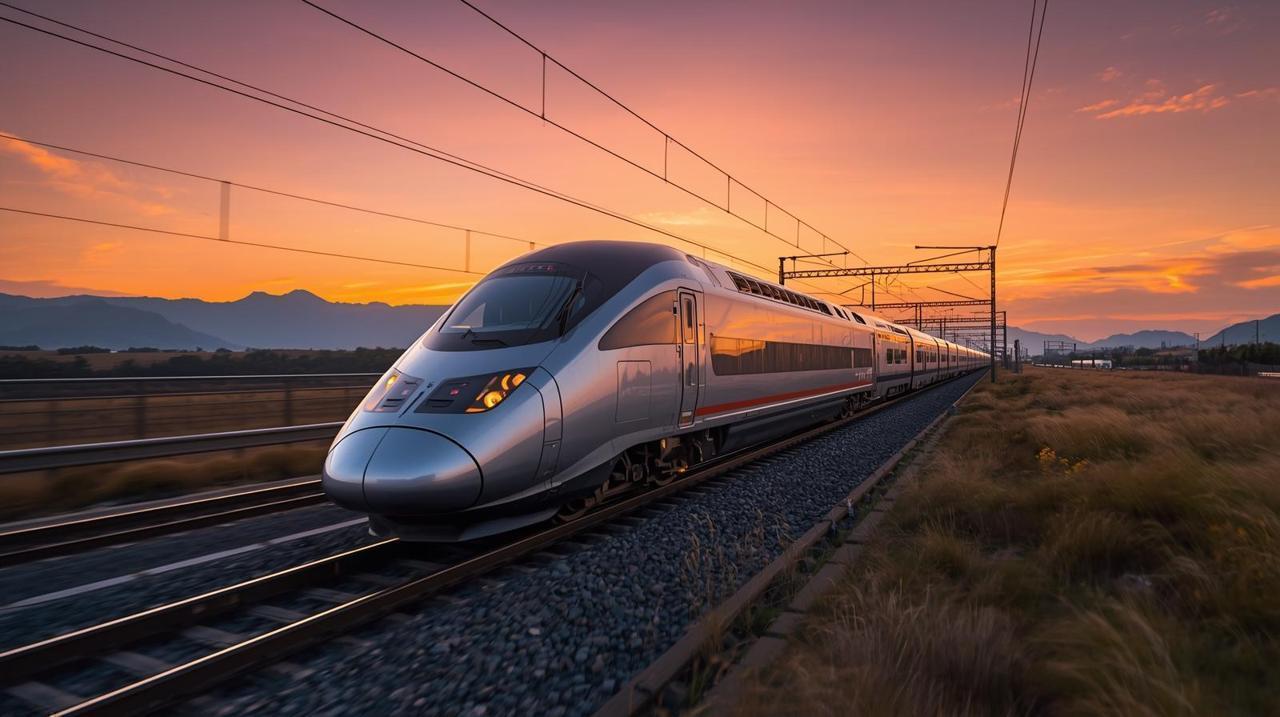
Post by : Avinab Raana
China’s high-speed rail (HSR) network is one of the greatest engineering achievements of the modern era. Spanning more than 40,000 kilometers, it’s not just the largest in the world — it’s a symbol of technological innovation, national pride, and economic transformation. What began as an ambitious infrastructure project has evolved into a model of modern transportation, redefining how millions of people travel every day.
Two decades ago, China had no high-speed trains. Today, it operates over two-thirds of the world’s total high-speed rail lines. The country’s transformation began in the early 2000s, when the government recognized the potential of fast, efficient transport to connect vast regions and fuel economic growth.
The turning point came in 2008, with the launch of the Beijing–Tianjin Intercity Railway, China’s first true high-speed line. From that moment, construction accelerated at an unprecedented pace. By combining foreign technology, domestic innovation, and large-scale investment, China built a network that connects nearly every major city across its vast territory.
China’s rapid rail expansion is the result of a unique mix of centralized planning, innovation, and efficiency.
Massive Investment: China invested over $900 billion USD into high-speed rail development.
Standardization: The country standardized rail designs, reducing costs and speeding up construction.
Indigenous Innovation: Initially based on imported technologies from Japan, Germany, and France, China quickly developed its own CRH (China Railway High-speed) and Fuxing (Rejuvenation) train models, capable of speeds up to 350 km/h.
Integrated Planning: The rail network connects seamlessly with airports, metro systems, and highways, making travel efficient and interconnected.
This strategic, large-scale approach allowed China to complete in two decades what took other countries nearly a century.
China’s HSR network isn’t just about speed — it’s about economic development and regional integration.
Urban Growth: Second- and third-tier cities such as Wuhan, Zhengzhou, and Chengdu have flourished due to better connectivity.
Labor Mobility: Millions now commute between cities daily, expanding job opportunities and regional cooperation.
Tourism Boom: Scenic high-speed routes have made domestic tourism more accessible than ever.
Reduced Air Travel: High-speed trains have replaced short-haul flights, cutting carbon emissions and congestion.
According to the World Bank, every $1 invested in China’s high-speed rail system generates between $2 and $3 in economic returns — a clear sign of long-term sustainability.
China’s trains are among the most technologically advanced in the world.
Fuxing Hao (Rejuvenation): Operates at 350 km/h and is fully designed and manufactured in China.
Autonomous Train Technology: Some routes now run driverless high-speed trains, monitored remotely for safety and precision.
Maglev Innovation: China is developing magnetic levitation (maglev) trains that can reach 600 km/h, potentially redefining long-distance travel.
Green Energy: Newer trains use regenerative braking systems and energy-efficient materials to support China’s carbon neutrality goals.
Each advancement reflects China’s vision to make its railways faster, smarter, and more sustainable.
China’s success in high-speed rail has made it a global leader in rail technology exports.
Chinese companies are now building or proposing HSR projects in:
Indonesia (Jakarta–Bandung line)
Thailand
Russia
Africa (Kenya, Nigeria)
Europe (Hungary–Serbia line)
Through its Belt and Road Initiative (BRI), China is promoting rail connectivity as a means of economic diplomacy, helping other nations modernize infrastructure while strengthening international partnerships.
High-speed rail plays a crucial role in reducing China’s carbon footprint.
Compared to air travel or car transport, HSR emits 70% less CO₂ per passenger kilometer.
By encouraging millions to switch from cars to trains, China’s HSR system contributes directly to its “Dual Carbon” goal — achieving carbon peak by 2030 and neutrality by 2060.
Moreover, new stations are designed with solar panels, smart energy systems, and sustainable materials, reinforcing the country’s commitment to green growth.
Despite its success, China’s HSR faces challenges:
High Construction and Maintenance Costs: Some routes in less populated areas struggle with profitability.
Debt Concerns: The rapid pace of expansion has raised questions about financial sustainability.
Technological Competition: Japan’s Shinkansen and Europe’s high-speed systems still lead in certain safety and innovation aspects.
Yet, China continues to refine its approach, focusing on efficiency, digital management, and international collaboration to maintain its global edge.
By 2035, China aims to expand its HSR network to around 70,000 kilometers, connecting more than 95% of its cities with populations over 500,000.
Future projects include:
New maglev routes between major cities.
High-speed freight trains for e-commerce and logistics.
AI-driven scheduling and maintenance systems to enhance safety and performance.
China’s focus is clear: to remain the world leader in rail innovation, setting standards for efficiency, sustainability, and connectivity.
China’s high-speed rail network is more than an infrastructure project — it’s a symbol of innovation, national ambition, and smart planning. From engineering marvels to sustainable design, the system has transformed how people move, live, and work.
As China continues to expand and upgrade its network, it offers a blueprint for other nations seeking to build fast, clean, and efficient transport systems. With 40,000 kilometers already in motion, China’s journey on the rails of innovation is just getting started.
#trending #latest










Advances in Aerospace Technology and Commercial Aviation Recovery
Insights into breakthrough aerospace technologies and commercial aviation’s recovery amid 2025 chall

Defense Modernization and Strategic Spending Trends
Explore key trends in global defense modernization and strategic military spending shaping 2025 secu

Tens of Thousands Protest in Serbia on Anniversary of Deadly Roof Collapse
Tens of thousands in Novi Sad mark a year since a deadly station roof collapse that killed 16, prote

Canada PM Carney Apologizes to Trump Over Controversial Reagan Anti-Tariff Ad
Canadian PM Mark Carney apologized to President Trump over an Ontario anti-tariff ad quoting Reagan,

The ad that stirred a hornets nest, and made Canadian PM Carney say sorry to Trump
Canadian PM Mark Carney apologizes to US President Trump after a tariff-related ad causes diplomatic

Bengaluru-Mumbai Superfast Train Approved After 30-Year Wait
Railways approves new superfast train connecting Bengaluru and Mumbai, ending a 30-year demand, easi